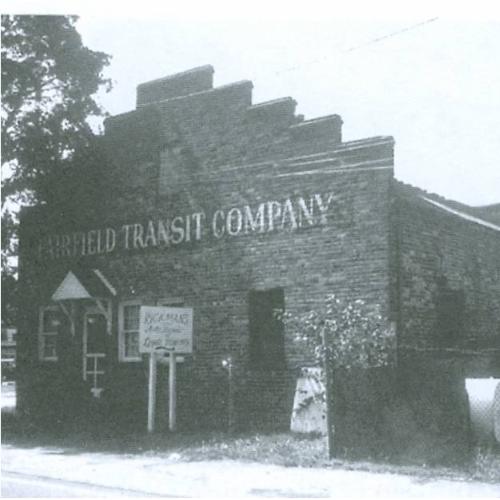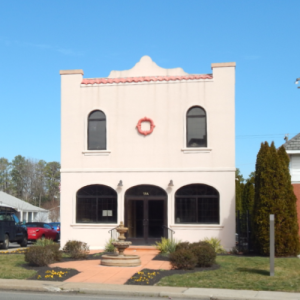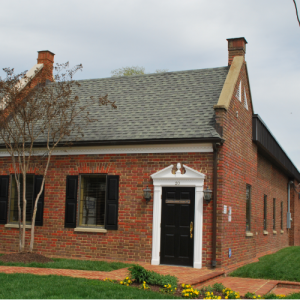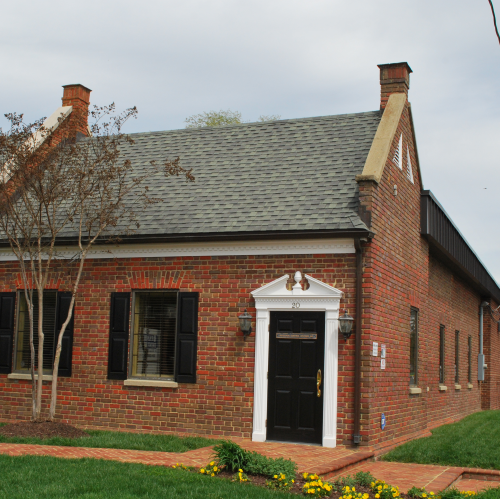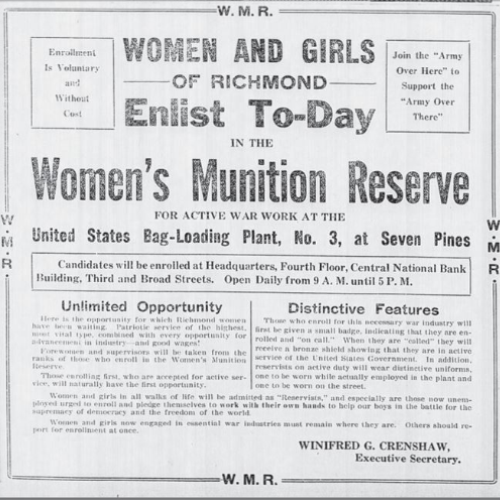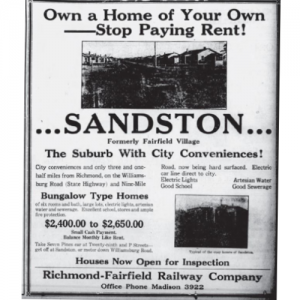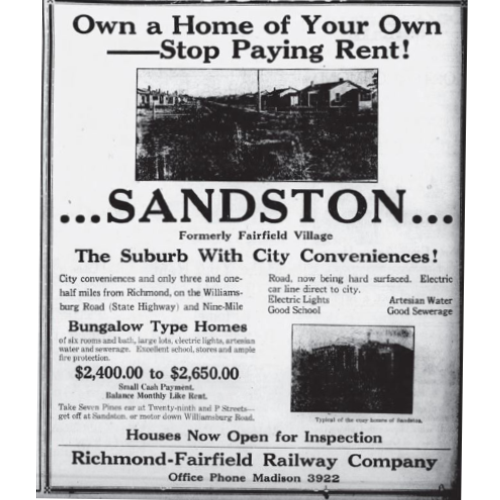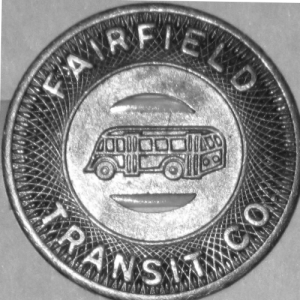History
Sandston is an unincorporated community located approximately 5 miles east of the City of Richmond. The area now known as Sandston originally began as a workers village for the E.I. DuPont de Nemours Seven Pines Loading Plant #3, specifically chosen for the flat, undeveloped land that had a connection to a railway line into the City of Richmond. This plant was established in 1918 to assist in sewing silk bags for gun powder during World War I, and three quarters of the employees at this plant were young women. The worker village was comprised of dormitories, community centers, recreational facilities, and single-family housing for those acting in administrative positions at the plant. These single-family houses were kit houses designed in partnership between the DuPont Company and the Aladdin Company in Bay, Michigan. Four designs for six room bungalows were created in this partnership, and many of the original kit houses still stand in current day Sandston.
After the munitions plant closed following World War I, the Richmond-Fairfield Railway Company, under Oliver J. Sands as president, purchased the tract that the worker village was founded on in 1921. The worker village was used to start a suburban neighborhood that centered around affordable housing for workers commuting into the City of Richmond on the railway line. The unincorporated town began to grow, and in 1923 the village had enough of a population to support its own post office. Due to naming regulations, the village renamed itself from the Village of Fairfield to Sandston, in honor of Oliver J. Sands.
Sandston continued to grow and develop well into the 1960s, with multiple commercial, religious, educational, civic, and recreational uses. Most housing was modest and vernacular forms based off the original six room bungalows; however, there are many examples of architectural styles present including Colonial Revival, Minimal Traditional, Craftsman, and Spanish Mission Revival. The commercial corridor along Williamsburg Road began to fully develop in the 1940s, primarily after World War II when the railway line was removed in favor of the automobile. The period of significance for the historic district ends in 1966, which is when the post office of Sandston was relocated to a building twice the size of the original. This signals the expansive growth that Sandston had experienced in those four decades since the Richmond-Fairfield Railway Company began development of this suburban neighborhood.
Sandston History(PDF)
Photography by permission June Banks Evans, Bryn Ffyliaid Publications

